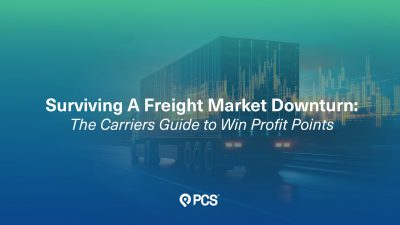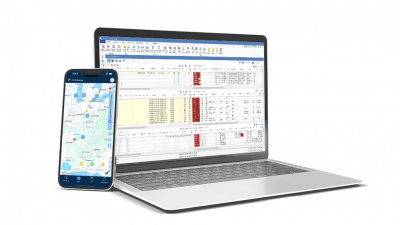Efficient management of loads, routes, and shipments is crucial in the transportation industry. A Transportation Management System (TMS) can enhance your operations by optimizing route planning, improving shipment tracking, and increasing overall logistics efficiency. By investing in a TMS, you streamline processes and achieve significant returns through cost reduction and productivity gains.
Understanding TMS pricing is key to maximizing these benefits. With models like subscription-based, usage-based, or tiered, it’s essential to choose a structure that aligns with your business goals. The right TMS will not only fit your budget but also pay for itself through improved load management and resource allocation.
Whether you’re new to TMS or upgrading, this guide will help you navigate pricing structures and select the best solution for your transportation needs.
Understanding TMS Pricing Models
When choosing a TMS, you’ll first decide if you want an on-premise or cloud-based TMS. Each option has distinct pricing models with advantages and considerations that impact your overall investment and return on investment (ROI). Understanding these models is crucial for making an informed decision.
Cloud-Based TMS Pricing
Cloud-based TMS solutions have gained popularity due to their flexibility and scalability. These systems typically offer a few key pricing models: per-load pricing, subscription-based pricing, and user-based pricing.
Per-Load Pricing
Per-load pricing is a usage-based model where you pay for each shipment processed through the TMS. This structure provides carriers and shippers with a flexible way to manage costs, as you only pay for what you use. This model is ideal for operations with fluctuating demand, allowing for better budget management without requiring a significant upfront investment.
Subscription-Based Pricing
Subscription-based pricing involves a fixed monthly or annual fee for accessing the TMS platform. Ideal for businesses with consistent transportation needs, such as managing regular truckloads or routes, it offers predictable costs and access to comprehensive features. Often paired with other models like per-load or per-user pricing, this structure allows your operations to scale — accommodating more trucks and loads as your business grows.
Per User / Per Integration Pricing
Some cloud-based TMS providers offer pricing based on the number of users and/or integrations. This model charges an annual fee for each user or integration point, allowing businesses to scale as needed. While it’s important to ensure that key team members have access, this flexible approach helps manage costs effectively. Discounts for long-term contracts can further reduce expenses, making it a valuable option for growing fleets.
On-Premise TMS Pricing
While cloud-based solutions are popular, some businesses still prefer on-premise TMS solutions. These systems typically involve a different pricing structure, including initial license costs, annual maintenance fees, and potential upgrade and integration costs.
Initial License Costs
On-premise TMS solutions usually require a substantial upfront investment for licensing. The cost depends on factors such as organization size, the number of users, and required features and modules. This one-time fee can be significant, necessitating careful budgeting and financial planning. For businesses preferring long-term control over their TMS, this upfront investment can be worthwhile.
Annual Maintenance Fees
In addition to the initial license cost, on-premise TMS solutions often include annual maintenance fees. These fees cover the ongoing support, updates, and bug fixes needed to ensure the system remains functional and up-to-date. Factoring in these recurring costs is crucial when considering an on-premise solution since continuous maintenance is essential for maintaining the system’s performance and longevity.
One-Time Implementation Fees
Implementing an on-premise TMS may involve one-time fees for installation and configuration. These fees can vary based on the complexity of the system and the level of customization required. It’s important to include these costs in your overall budget to avoid unexpected expenses during installation. Proper implementation will ensure the system aligns with your specific business needs.
Long-Term Costs and Challenges
Evaluating on-premise TMS pricing also involves considering long-term costs and potential challenges. Upgrades can be costly, often requiring new licenses or professional services, and integration challenges may arise that lead to additional investments in custom integrations or system compatibility updates.
It’s also important to account for potential hidden fees. Unlike cloud-based solutions, on-premise systems may require additional expenses in IT resources for implementation, ongoing maintenance, and security measures. Ensuring that your IT team is equipped to manage these responsibilities is crucial for maintaining system performance and protecting your data.
Key Factors Influencing TMS Pricing
Several key factors can significantly impact the overall cost of a TMS solution. Understanding these factors can help you make a more informed decision and potentially negotiate better terms with TMS providers.
Number of Users
The number of users needing access to the TMS can impact its cost. Depending on the model, pricing often increases with additional user licenses. Evaluate your current and future user needs. Several providers offer tiered pricing, which can benefit larger organizations, while others offer unlimited user licenses, which are ideal for businesses with many occasional users.
Integrations and Customizations
The level of integration and customization impacts TMS costs. Most businesses require TMS integration with additional tools like ELDs, EDI, Tracking, Mapping, or CRMs. While many solutions offer pre-built integrations, custom integrations for proprietary systems can increase costs. Customizations like tailored workflows or reports may also add expenses. Balance these benefits against additional costs and future upgrade complications.
Support and Training
Support and training levels vary between TMS providers and affect overall costs. Some providers include comprehensive support and training in standard pricing, while others charge extra. Assess your organization’s support needs during implementation and ongoing operations. Robust support and training plans can be valuable, especially for less experienced teams, to ensure effective use of the TMS.
PCS TMS Pricing Advantages
When considering TMS options, it’s essential to explore each provider’s features and limitations. This careful evaluation can significantly impact the overall value and cost-effectiveness of your TMS investment. Here are some of the reasons why PCS TMS is a premier TMS provider.
Comprehensive Feature Set
PCS TMS offers many features covering numerous aspects of transportation management. This all-in-one approach enhances both operational efficiency and cost-effectiveness.
Accounting and Invoicing
Two of PCS TMS’s standout features are its built-in carrier accounting and shipper invoicing solutions. These functionalities streamline financial processes, reducing the need for separate accounting software and minimizing errors associated with manual data entry or system integrations.
Dispatching
PCS TMS also excels in dispatching, with features designed to optimize route planning and load assignment. These capabilities lead to improved operational efficiency, reduced transportation costs, and enhanced customer satisfaction through more timely deliveries.
Mobile App
One of the platform’s most notable features is its intuitive mobile app, PCS Mobile, which gives you full control over your business on the move. By allowing field personnel to access and update critical information continuously, this feature improves communication, visibility, and efficiency.
Cost Efficiency
A significant advantage of PCS TMS is its cost efficiency, largely due to its all-in-one nature. By offering a comprehensive suite of features within a single platform, PCS TMS eliminates the need to invest in and maintain separate systems for accounting, dispatching, and mobile communication. This reduces direct software costs and minimizes the resources required for system integration and maintenance.
Having all these functionalities in one system also improves data consistency and reduces the potential for errors that often occur when transferring data between multiple systems. This improved data integrity leads to better decision-making and further operational efficiencies, indirectly contributing to cost savings.
Case Study: Voyager Express
Voyager Express, a leading truckload company in Detroit, faced growth and efficiency challenges with their traditional methods. They adopted PCS TMS for its comprehensive features, including accounting and dispatching, to overcome these obstacles.
Their key results included:
- Cost Savings: PCS TMS’s all-in-one system reduced software and maintenance costs by eliminating the need for multiple software. This consolidation streamlined operations and improved data consistency.
- Operational Efficiency: Advanced dispatching features reduced errors and increased fleet management productivity. GPS integration ensured accurate tracking and timely updates, achieving a 98% on-time pick-up and delivery rate.
- Financial Management: Robust accounting features cut the billing cycle to 2-3 days post-delivery, improving cash flow and reducing administrative costs.
- Driver Engagement: The PCS mobile app improved communication and paperwork submission for over 75 drivers, reducing processing time and enhancing driver satisfaction.
By implementing PCS TMS, Voyager Express achieved substantial cost savings and operational efficiencies, proving PCS as the best choice for a cost-effective and efficient TMS solution.
How to Choose the Right TMS for Your Business
Selecting the right TMS for your business involves careful consideration of your specific needs and objectives. Here are some key steps to guide you through the process:
Assessing Your Needs
Thoroughly assess your business needs by analyzing current transportation processes, identifying pain points, and determining objectives. Consider factors like freight volume, route complexity, number of trucks, and industry requirements. Involve key stakeholders and consider growth plans, such as increased freight volume or market expansion, to ensure the TMS can scale with your business.
Researching Available Options
Research TMS providers with a proven track record and industry experience. Evaluate features that fit your needs, such as route optimization, fleet management, and integrations with ELDs, Tracking, or Fuel Card systems. Customer reviews, case studies, and product demos can provide valuable insights into each provider’s reputation and solution effectiveness.
Calculating ROI
Calculate the potential return on investment (ROI) by considering cost savings on business expenses, improved efficiency, and reduced manual errors. Factor in intangible benefits like improved customer service and enhanced visibility. Assess time savings from automated processes and reduced administrative tasks to understand the overall value.
Choosing a Partner
Selecting a TMS provider is also about choosing a long-term partner. Look for providers with a strong support team offering training, implementation assistance, and ongoing customer support. A reliable partner ensures you maximize the TMS value and adapt to future business needs effectively. For example, PCS offers PCS University for Carriers and Shippers, as well as an extensive knowledge base and a wide range of guides and resources to help you master your TMS.
Optimize Your TMS Investment with PCS TMS
Selecting the right TMS can significantly impact the efficiency and success of your transportation operations. By understanding your needs, researching available options, and calculating potential ROI, you can make a choice that aligns with your business objectives. From advanced accounting and invoicing to optimized dispatching, PCS TMS for Shippers and PCS TMS for Carriers delivers a cost-effective, all-in-one solution. Investing in PCS gives you a system that fits your current needs and can grow with you. Contact us today for a personalized demo and detailed TMS pricing information.



